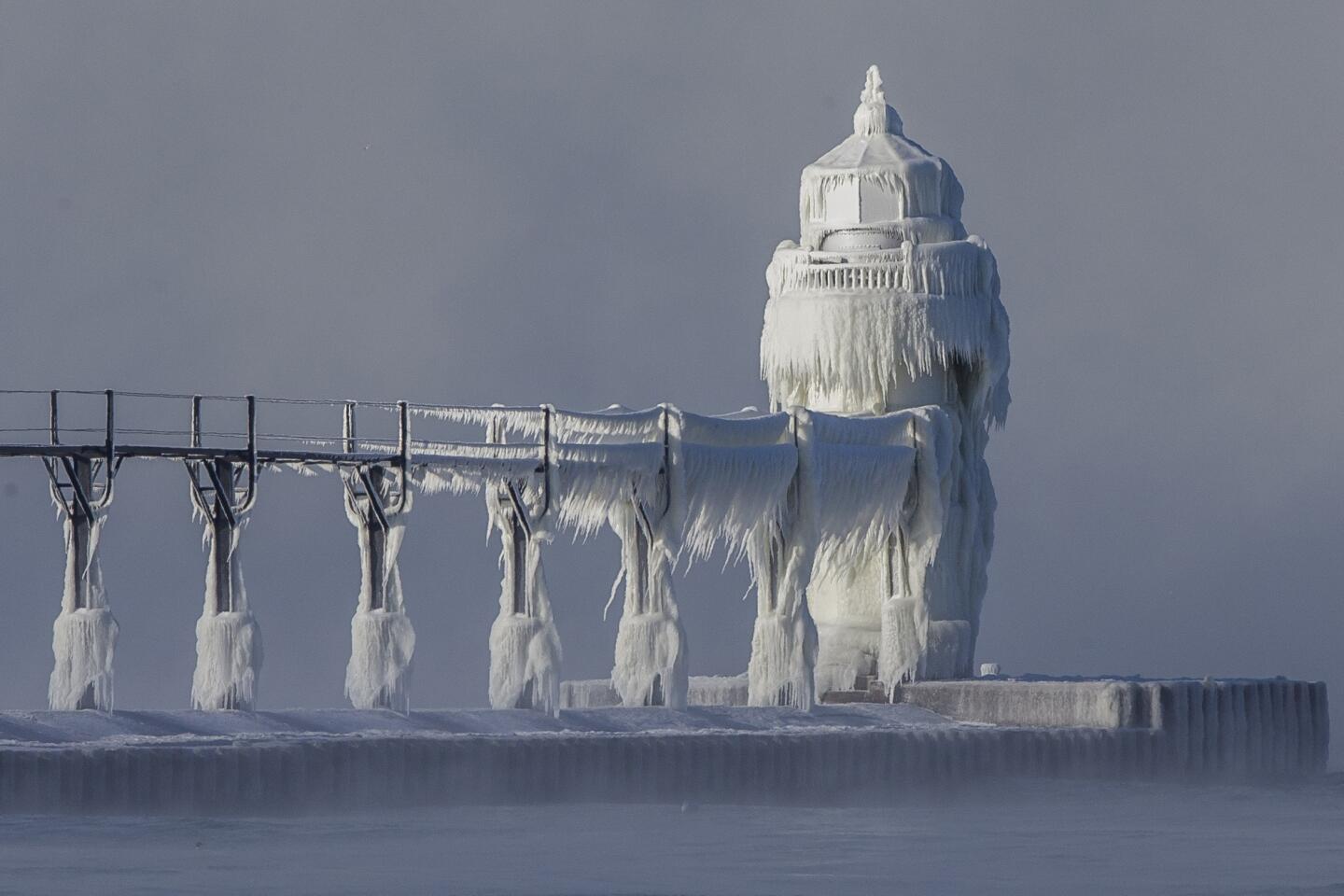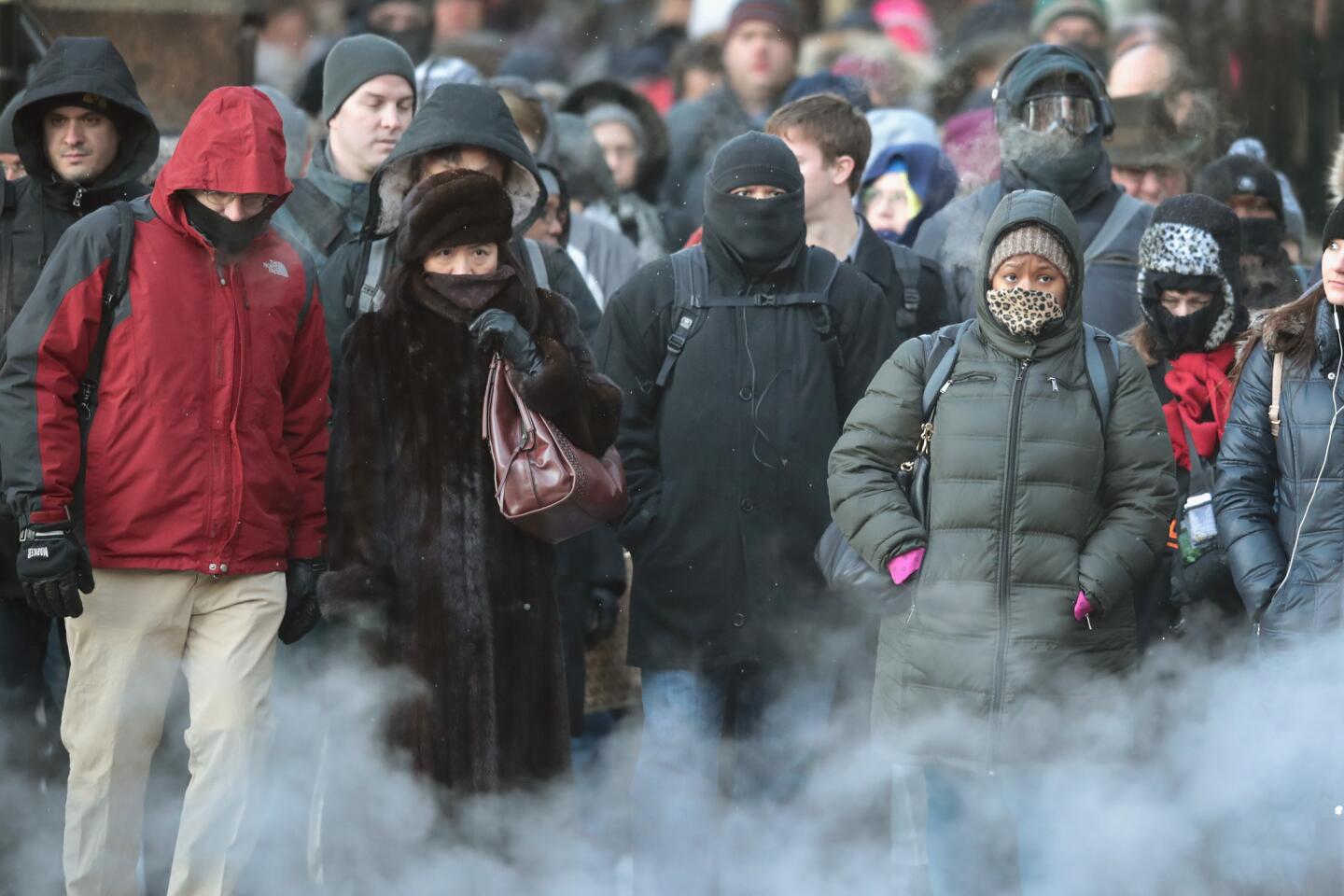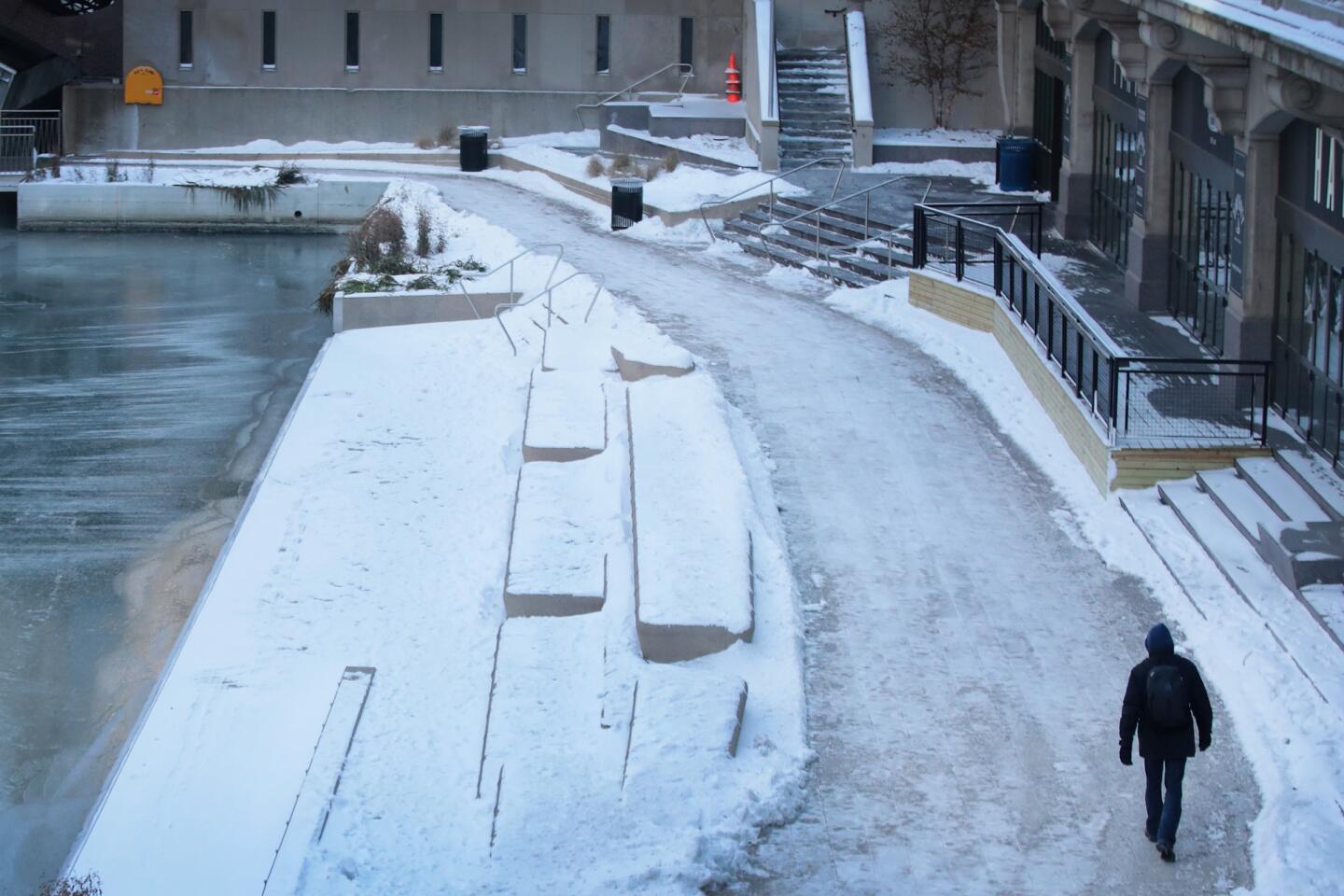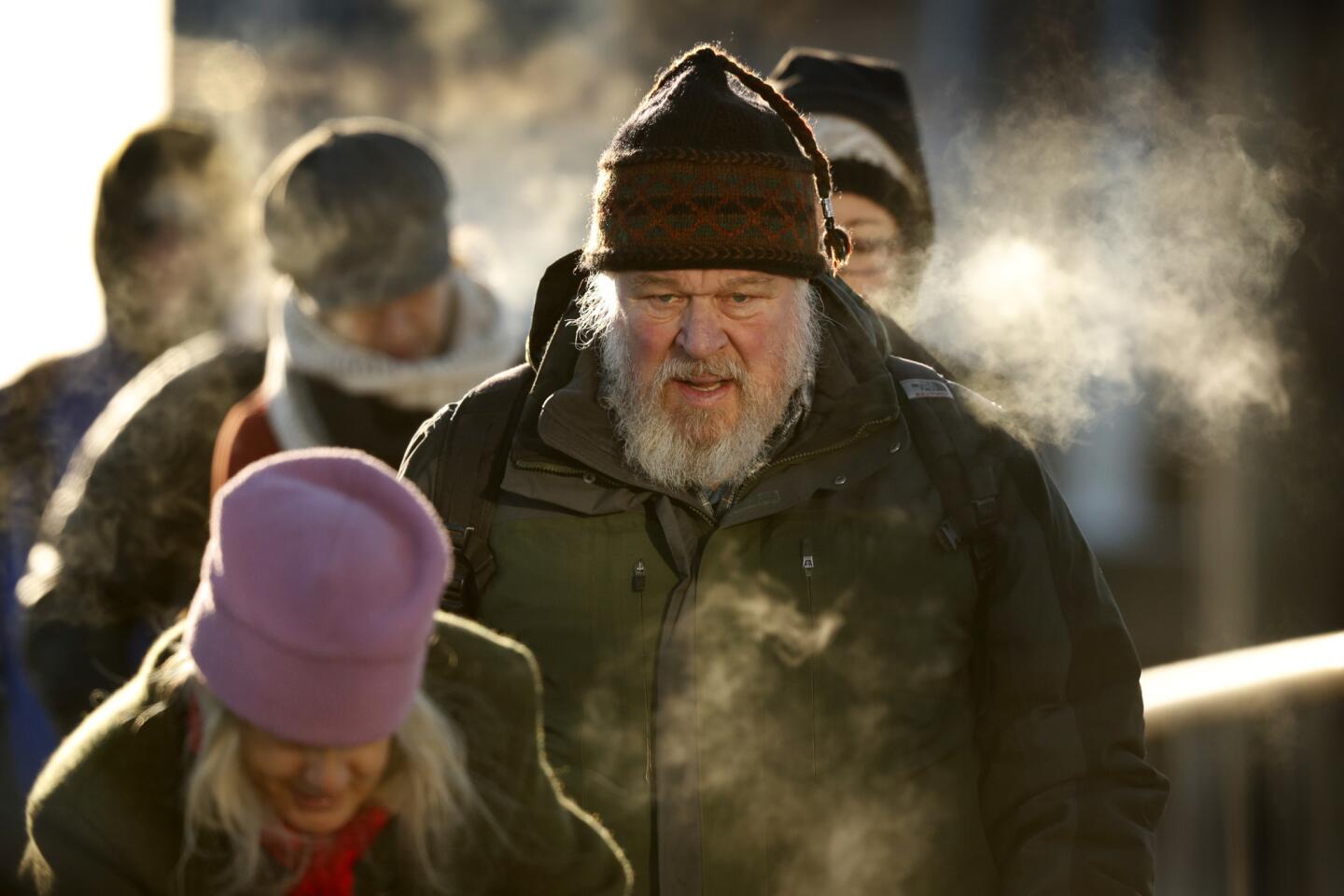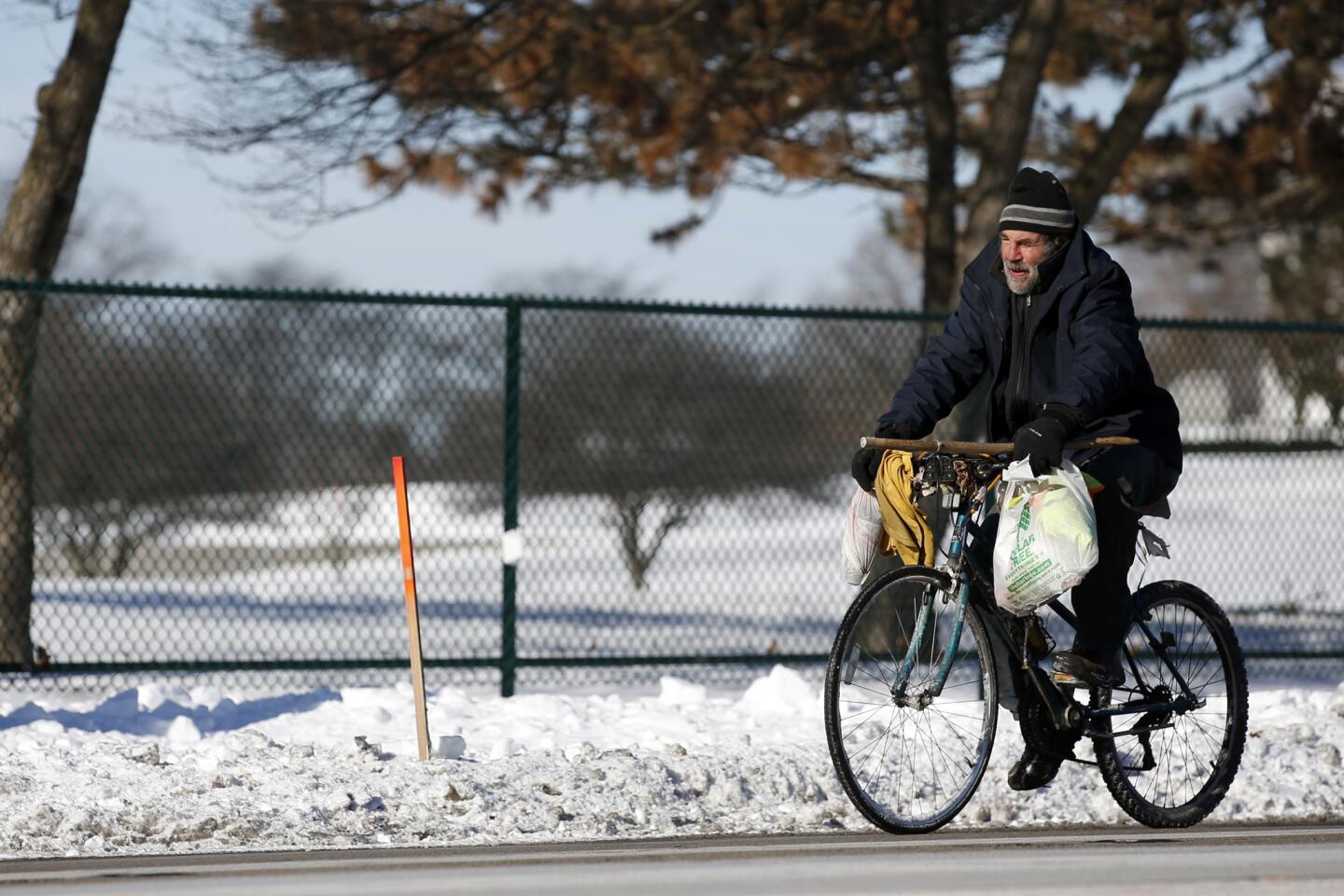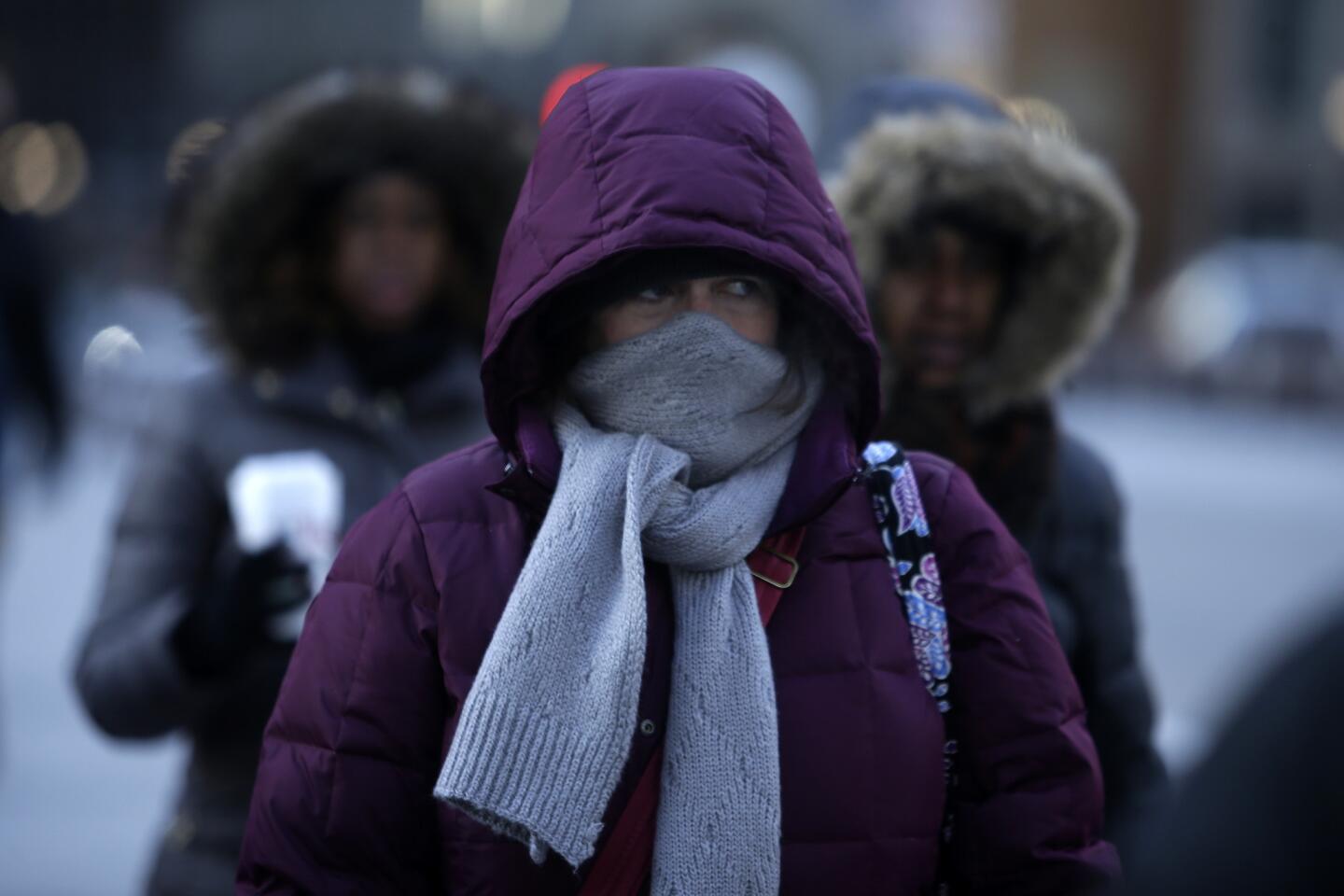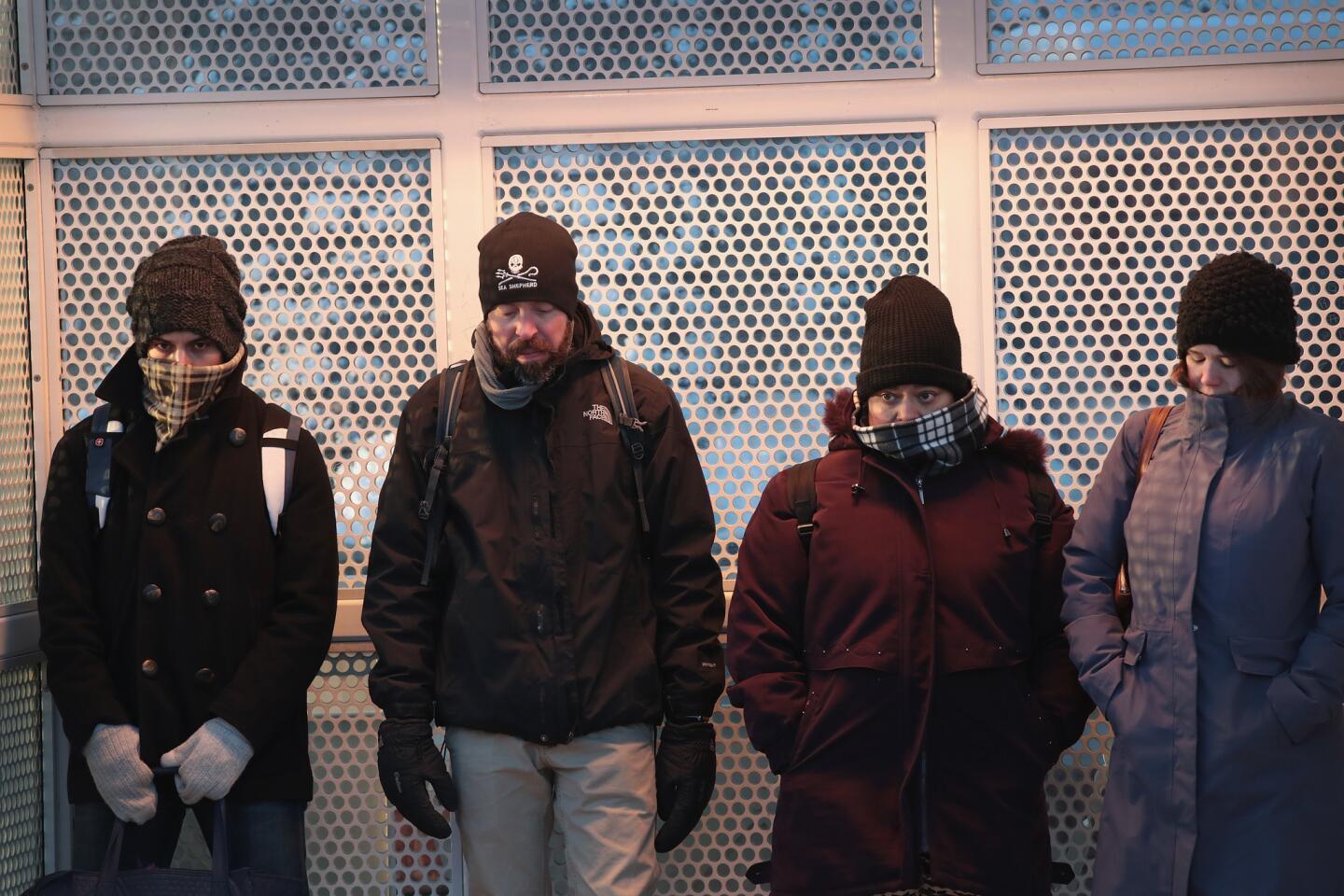37 degrees below zero? Blame it on the return of the ‘polar vortex’
- Share via
“This morning when I walked over to work it was pretty darn cold.”
So said Raymond Foss, town manager in the small town of Patten, Maine. Apparently, Foss is given to understatement. With the wind chill, the temperature in Patten on Friday plummeted to 37 degrees below zero.
The polar vortex, as it’s known, has come back and sent temperatures falling across the country. And even colder temperatures are expected in days to come. This weekend frigid temperatures are expected in a vast area — from Idaho to Maine and as far south as central Oklahoma.
But in Patten, population 1,017 with one main road and one general store, folks soldiered on. The town office was still open, as were the general store and schools in nearby Stacyville, where Patten residents send their children. The public works director, who normally has Fridays off, came in to check the heat in all the town buildings, but otherwise business was proceeding pretty much as usual.
“This is part of winter in northern Maine, so people are enjoying it and they’re out in it,” Foss said. The town planned to go forward with its weekend activities, including a “Santa run” by the Fire Department and a winter formal.
In Maine the daytime high was 1 degree. And other states have been chilled this week. In Wisconsin, Milwaukee hit 2 degrees below zero. Cleveland reached 12 degrees.
The plunging temperatures were the result of a southward shift in the polar vortex, a large area of low pressure and cold air that swirls around the north and south poles year-round, according to the National Weather Service.
The vortex regularly expands during wintertime, pushing streams of cold air south. The vortex is nothing new, but it became a household word, uttered through chattering teeth, in January 2014 when it famously sent much of the U.S. into a deep freeze.
The latest Arctic blast began hitting the Northern Plains and Midwest earlier this week. The temperature in Great Falls, Mont., hit 15 degrees below zero Wednesday.
The cold air then moved south and east, hitting the mid-Atlantic and Northeast with unusually low temperatures for this time of year on Thursday and Friday. On Thursday night, the temperature in New York City hit 19 degrees, with the wind chill near zero. On Friday the weather was a bit warmer, but freezing rain was expected in the evening, creating icy conditions.
“Our biggest concern with cold weather is the health effect from prolonged exposure to cold weather,” said Ben Krakauer, director of watch command for the Office of Emergency Management in New York City. In subfreezing temperatures frostbite can occur after just 30 minutes of exposure. Krakauer’s office was urging residents to stay indoors, to bundle up if they absolutely had to go outside and to check on their neighbors.
“We’re also concerned about our homeless population,” Krakauer said. The Department of Homeless Services had issued a code blue, allowing any homeless person seeking shelter to be granted it. Krakauer said the department staff members were also checking on the known homeless population and encouraging the public to call the public services hotline or 911 if they found a homeless person in distress.
In state after state, residents were stocking up on groceries, shovels and other snow supplies as they braced for a second round of cold, as well as snow.
“It’s been a constant flow” of customers, said Jimmy Zadrzynski, who works at the Bliffert Lumber & Hardware store in Milwaukee.
Zadrzynski normally bikes to work, but “I wasn’t even going to try to bring my bike here today,” he said, noting that the snow drifts caused by high winds were constantly blowing snow in people’s faces.
Instead, Zadrzynski put on a scarf around his face, a hat, several layers of clothes and an extra jacket and walked. He kept a hat and sweatshirt on all day as he went in and out.
By early afternoon, Zadrzynski said the store had “easily gone through a pallet of salt” — that’s about 50 bags at 50 pounds each — and was “selling snow blowers like crazy.”
The store’s mechanic had also been working nonstop, tuning up customers’ existing blowers, and Zadrzynski hadn’t yet been able to get away from customers to put in a delivery order for food.
Nearly a foot of snow was predicted for southern Wisconsin by early Saturday, and Zadrzynski said he expects to sell two or three more pallets of salt.
The cold, windy conditions are expected to creep back up above freezing just in time for Christmas.
Twitter: @AgrawalNina
ALSO
Here’s what the governor of Colorado has to tell other states about legalizing marijuana
Stroke of luck and gun laws kept Washington state mall shooting from being much worse, police say
In Arizona, Border Patrol doesn’t include dozens of death in tally of migrants who perish
More to Read
Sign up for Essential California
The most important California stories and recommendations in your inbox every morning.
You may occasionally receive promotional content from the Los Angeles Times.
